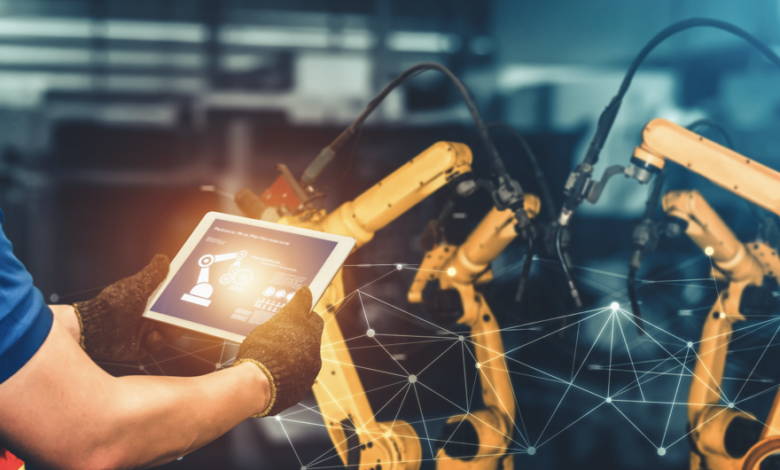
The unfortunate mix of Brexit and Covid-19 has had a tremendous impact on businesses around the world forcing them to re-evaluate how they operate in uncharted territory. This disruption has presented many challenges over the past 18 months but fortunately, many opportunities, with unprecedented e-commerce growth during Lockdown providing new customers and unexpected revenue.
Manufacturing and logistics businesses, in particular, have entered a new era where intralogistics automation and Autonomous Mobile Robot Technologies (AMRs) are becoming commonplace but is this our future, or are we placing ourselves at risk by putting too much trust in technology too soon?
In June 2021, Guidance Automation commissioned Sapio Research to explore the importance of intralogistics automation including the role of AMRs within companies that have a warehouse, fulfillment, production, or distribution operation. The research gauged both awareness and confidence in this type of technology, the requirement for automation, plans for adoption and the impact it has on employees.
Dr. Paul Rivers, CEO of Guidance Automation believes that while there is hesitancy among some to embrace automation, companies are beginning to recognise the need to insulate their businesses from future disruption. He argues that there is an appetite for automation, albeit cautiously and this is evident through the survey results with almost three-quarters of those surveyed stating they have plans to invest in the next year. But what is the key driver behind this gear shift towards automation?
Post-Covid acceleration
Results show businesses have been predominantly impacted by COVID-19 rather than Brexit with 25% of companies confirming the pandemic has accelerated their plans to deploy automation. Over half (54%) also recognise the impact automation has on making workplaces more Covid-secure.
More than one-third of businesses have seen an increase in customer demand due to the pandemic but actually, identify the operational challenges they are facing as the driving force towards deploying automation. Nearly half of those surveyed agreed that social distancing has made manual process flows unworkable; with many staff now working at home, businesses have also had to embrace technology to safely enable this new way of working.
There is a myriad of benefits to automation with many believing the implementation of AMRs will also lower operational costs, increase productivity and reduce pick/pack errors. For those in e-commerce and retail, 35% expect to benefit from more accurate order fulfillment, accentuating the importance of meeting customer needs the first time to minimise expensive returns costs.
Many businesses are being very cautious with expansion and investment in the current climate, choosing to sit and wait out the uncertainties that Covid has brought with it. However, this is untrue for a lot of manufacturing and logistics businesses who have a positive outlook to investing money in automation with half expecting a return on their investment. This may be due to the fact that these businesses have seen their sales increase during the pandemic enabling them to invest in their business processes earlier than expected.
Resistance to change
While confidence in the value of automation is high, the research also reveals a number of misconceptions that could undermine adoption. So, what are these factors holding many back from moving into the world of automation?
There is the contentious issue of replacing certain ‘human functions’ with automation, specifically robotics. There is much discussion about employee job losses, the possibility of unsatisfactory automation processes when specific workflows aren’t studied and a common belief that it’s a cost-cutting exercise. In fact, the survey results show that just over half (54%) of businesses expect automation to have a positive impact on warehouse or manufacturing plant employees. These include less repetitive and strenuous manual work (49%), providing workers with an opportunity to upskill (39%) and by reducing the reliance on physical picking activity, flexibility within the business is increased providing relief for overworked staff (40%). Another benefit is more options for job sharing and part-time working, attracting a more diverse resource pool, which could help to address the recruitment shortfall.
Surprisingly, many companies are holding back when it comes to the adoption of automation due to overestimating how long it would take to roll-out automation within their business. While companies that are using AMRs confirm the entire project takes approximately 20 months, those that have not yet embarked on a project expect it to take 25% longer at 33 months – a timeline that is potentially deterring investment.
Further, 38% of companies worry about the lack of trained staff to maintain the automated systems and the amount of downtime required to upgrade, however, AMR acquisition comes with a Service Level Agreement and support that ensures companies simply do not need dedicated AMR maintenance staff. It’s also widely recognised that avoiding business disruption is vital and so systems are carefully tested and run in tandem ensuring automation is achievable with minimal disruption and upheaval.
Conclusion
After 18 months of extraordinary global upheaval, businesses of every size are refocusing, rebuilding and adapting to new challenges. Although only one in ten organisations are using AMRs currently, awareness of its benefits is growing rapidly and businesses are beginning to embrace automation whether through choice or necessity.
So, what does the future of intralogistics automation look like? Statistics show that 68% of companies plan to invest in the next six to 12 months and the general consensus is that automation is an integral part of our future with 73% stating that intralogistics automation is critical to business success. Clearly, we are moving into a new phase of accelerated automation where humans and robots work together for the better.




